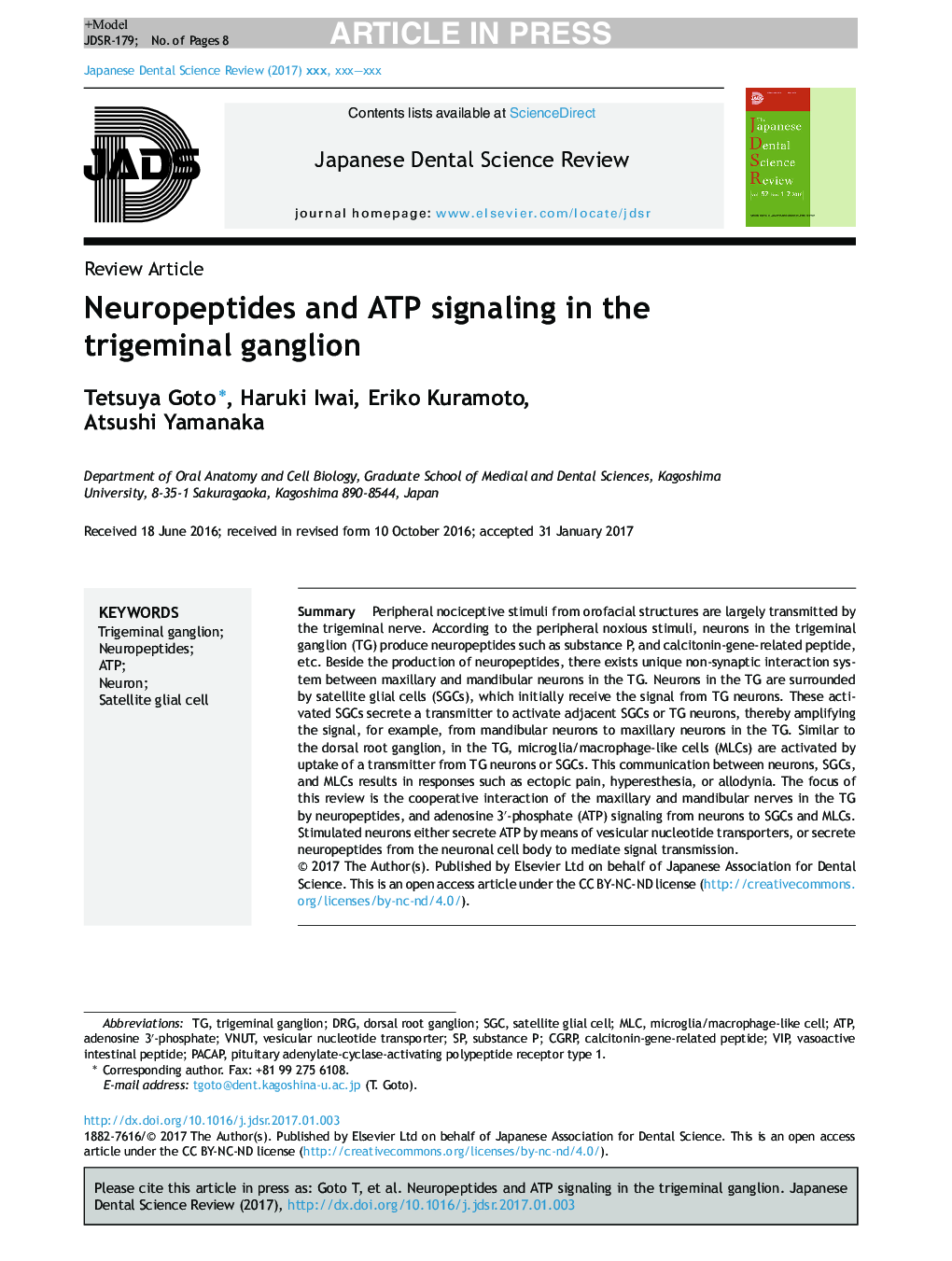| Article ID | Journal | Published Year | Pages | File Type |
|---|---|---|---|---|
| 8698137 | Japanese Dental Science Review | 2017 | 8 Pages |
Abstract
Peripheral nociceptive stimuli from orofacial structures are largely transmitted by the trigeminal nerve. According to the peripheral noxious stimuli, neurons in the trigeminal ganglion (TG) produce neuropeptides such as substance P, and calcitonin-gene-related peptide, etc. Beside the production of neuropeptides, there exists unique non-synaptic interaction system between maxillary and mandibular neurons in the TG. Neurons in the TG are surrounded by satellite glial cells (SGCs), which initially receive the signal from TG neurons. These activated SGCs secrete a transmitter to activate adjacent SGCs or TG neurons, thereby amplifying the signal, for example, from mandibular neurons to maxillary neurons in the TG. Similar to the dorsal root ganglion, in the TG, microglia/macrophage-like cells (MLCs) are activated by uptake of a transmitter from TG neurons or SGCs. This communication between neurons, SGCs, and MLCs results in responses such as ectopic pain, hyperesthesia, or allodynia. The focus of this review is the cooperative interaction of the maxillary and mandibular nerves in the TG by neuropeptides, and adenosine 3â²-phosphate (ATP) signaling from neurons to SGCs and MLCs. Stimulated neurons either secrete ATP by means of vesicular nucleotide transporters, or secrete neuropeptides from the neuronal cell body to mediate signal transmission.
Keywords
Related Topics
Health Sciences
Medicine and Dentistry
Dentistry, Oral Surgery and Medicine
Authors
Tetsuya Goto, Haruki Iwai, Eriko Kuramoto, Atsushi Yamanaka,
